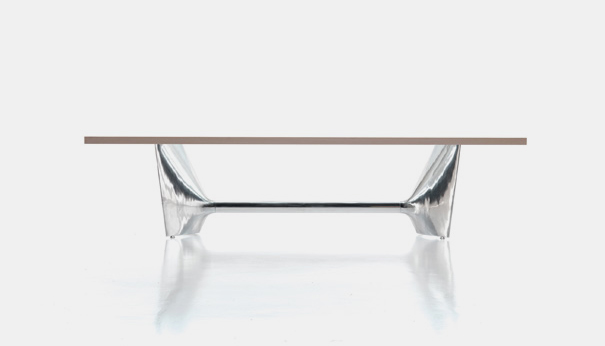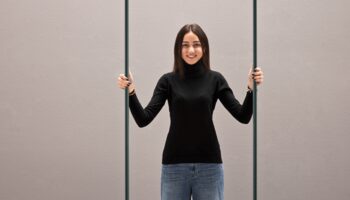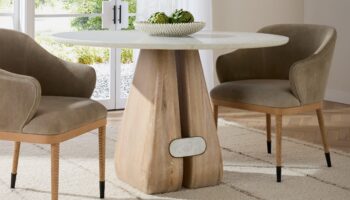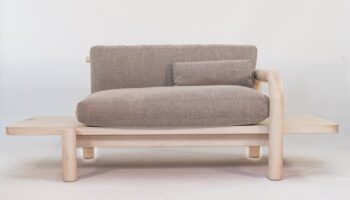Miller’s Fratino Table: The Monks’ Table Modernized
The Italian phrase “Tavolo Fratino” translates to “Monks’ Table”. Appropriately named, the Fratino table by American designer Jeff Miller for Italian manufacturer Cerruti Baleri, is a contemporary interpretation of this typological piece, “the essential and sober archetype of the convivial board,” according to the company. As with a traditional monks’ table, Miller’s design is marked by structural simplicity. The aluminum base is composed of two shell-cast pediments spanned by an extruded elliptical beam.
Tavola Fratino. Designed by Jeff Miller for Cerruti Baleri.
Two oversized screws are integrated into the form, fastening the three elements together. Assembly is completed by simply setting the top down on the base. The easy erection of the table is reflective of the structural simplicity of the design. Fratino is effectively two tables in one: by switching the feet and top supports the base structure can be turned upside down such that the central beam in a high position. The aluminum structure creates a dynamic and sculptural form through its formal language and reflectivity. The glass top reinforces these characteristics through exposure and visibility of the below structure.


Having recently viewed Dan Graham: Beyond at the Whitney, the element of reflection and mirroring is particularly intriguing. “[His] two-way mirrored constructions are the works that first gave Graham significant institutional presence. Sleek and interactive forms of outsize, architectural minimalism, the pavilions…contain viewers who, beckoned inside, become the objects of others’ attention while seeing their own images reflected back to them. The layered reflections elicit a sense of both displacement and self-consciousness.” according to Art in America. Although Miller’s Fratino isn’t necessarily achieving the prolific status of Dan Graham’s pavillions, it is nevertheless interesting to to consider the two in relation to one another. Miller’s aluminum base structure capitalizes on the material’s properties of reflectivity and fluidity. The three individual components appear as a singular, sculptural piece which captures the activity of its surroundings within its surface.
The table is offered in three sizes, the dimensions of the rectangular top vary according to the length of the central beam, while the shell-cast pediments remain a consistent size. The large rectangular tops are available in 15mm tempered glass or 50mm wood in natural or moka ash finishes.




Leave a Reply